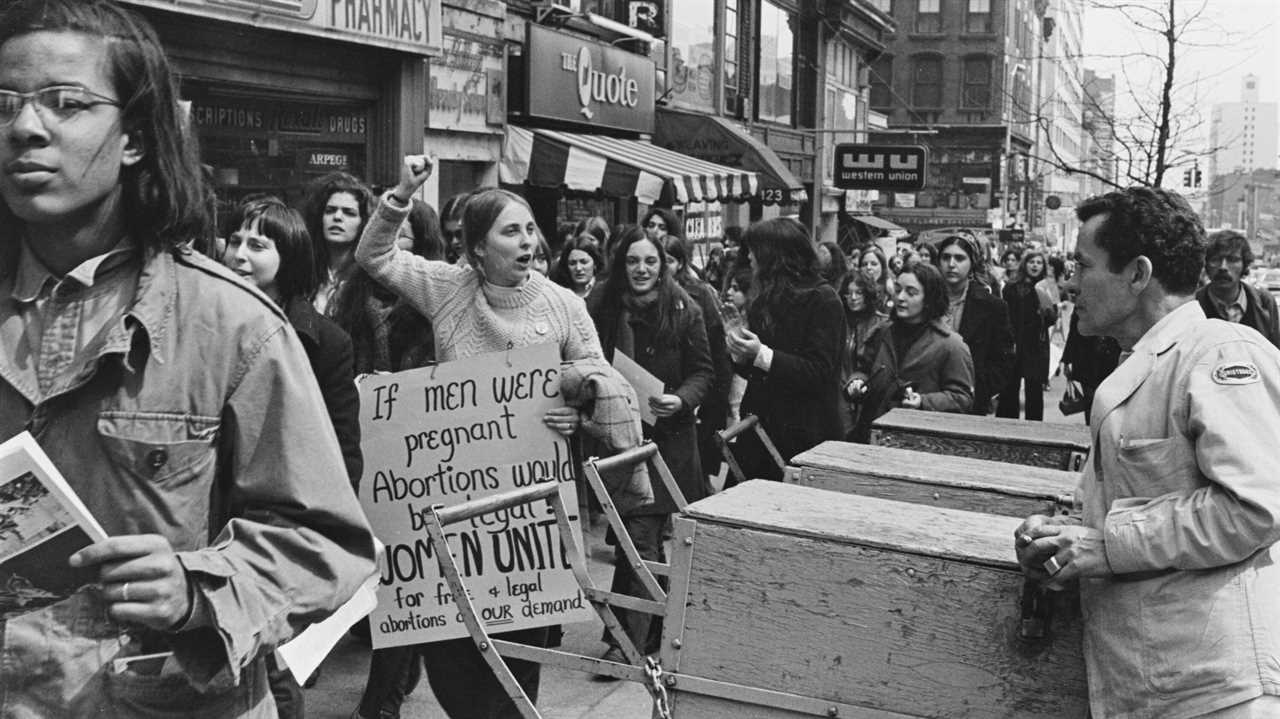
For three days in January 1970, they filled the 13th floor of the federal courthouse in Manhattan, women of all ages crowded into a conference room, sitting on the floor, spilling into the hallway. Some brought friends or husbands. One nursed a baby. Another was a painter who also taught elementary school. A third had gone to Catholic school. They’d come to give testimony in the case of Abramowicz v. Lefkowitz, the first in the country to challenge a state’s strict abortion law on behalf of women.The witnesses in the courthouse were among 314 people, primarily women, brought together by a small team of lawyers, led by Florynce Kennedy and Nancy Stearns, to set up a legal argument no one had made before: that a woman’s right to an abortion was rooted in the Constitution’s promises of liberty and equal protection. New York permitted abortion only to save a woman’s life. Kennedy and Stearns wanted the court to understand how risking an illegal procedure or carrying a forced pregnancy could constrict women’s lives in ways that men did not experience.In the conference room, the women were giving sworn depositions for the judges to read later. One testified that as a 19-year-old Vassar student, she was driven blindfolded to Washington, D.C., for an illegal abortion and bled for days afterward. She broke down as she described going to see a gynecologist in Poughkeepsie who threatened to call the police so they could take her to jail. Another woman, speaking matter-of-factly, said that when she became pregnant and had to carry the fetus to term, she was forced to take a leave of absence from Queens College and lost her scholarship. The press was allowed to attend, making the women’s words public.Lawyers representing the State of New York repeatedly objected to the testimony. When a freelance writer tearfully described giving a child up for adoption — “the most painful, difficult part of the experience was leaving the baby behind,” she said — Joel Lewittes, from the state attorney general’s office, stepped in. “I am going to move to strike all of the testimony as being irrelevant,” he said. Someone yelled “Pig!” and the room burst into applause.Florynce Kennedy scolded Lewittes for callousness. “I regard this case as a very definite platform for exploring the extent of the legalized oppression of women,” she said. “And I personally don’t, for one second, intend to lose sight of my objectives.”ImageFlorynce Kennedy in 1971.Credit...Jim Wells/Associated PressThose objectives started with forcing the courts to confront the impact of a near ban on abortion on women’s lives. “When we couldn’t control when we had a baby, we weren’t free and we weren’t equal,” Nancy Stearns, the lead writer of the briefs in the case, explained to me recently over the phone. “That was our fundamental argument,” she said of putting gender equality at the center of the case. “It was clearly even stronger for low-income women.”At the time, Stearns’s framing was unheard-of as a legal theory. It wasn’t just that the Supreme Court hadn’t decided a case about abortion. The court “had never found a single law to violate the equal-protection clause because it discriminated on the grounds of sex,” Reva B. Siegel, a Yale Law professor, explained in The Boston University Law Review in 2010.And so Stearns, Kennedy and the feminist movement they represented pursued a two-pronged strategy. As Kennedy put it, “When you want to get to the suites, start in the streets.” She was a prominent figure in the civil rights and Black Power movements. As an experienced litigator, “she understood going to court as a one-ass-at-a-time proposition,” Sherie M. Randolph, her biographer, told me. “To get anything to move, you needed activism.” Stearns, who was just three years out of law school at the time, also came up in the civil rights movement, working for the Student Nonviolent Coordinating Committee in the South.Three months after the depositions in Abramowicz, on March 28, 1970, thousands streamed through Manhattan for a protest called the Coat Hanger Farewell, which Kennedy helped organize. They “startled Easter shoppers” by marching across 34th Street, many wearing bell bottoms, The New York Times reported. (Kennedy was also known for her style, which included cowboy hats, fur coats and African jewelry.) On the steps of St. Patrick’s Cathedral, the protesters handed out red-lacquered coat hangers, and Kennedy spoke to the crowd. “There is no need for any legislation on abortion,” she said, “just as there is no need for legislation on an appendectomy.”Understand the Challenge to Roe v. Wade
The Supreme Court’s decision could be the most consequential to women’s access to abortion since 1973.
An Extraordinary Breach: The leak of a draft opinion suggesting that the justices will end theBy: Emily Bazelon
Title: America Almost Took a Different Path Toward Abortion Rights
Sourced From: www.nytimes.com/2022/05/20/magazine/roe-v-wade-abortion-rights.html
Published Date: Fri, 20 May 2022 09:00:41 +0000
Read More
 UK PoliticsWorld PoliticsVideosPrivacy PolicyTerms And Conditions
UK PoliticsWorld PoliticsVideosPrivacy PolicyTerms And Conditions
